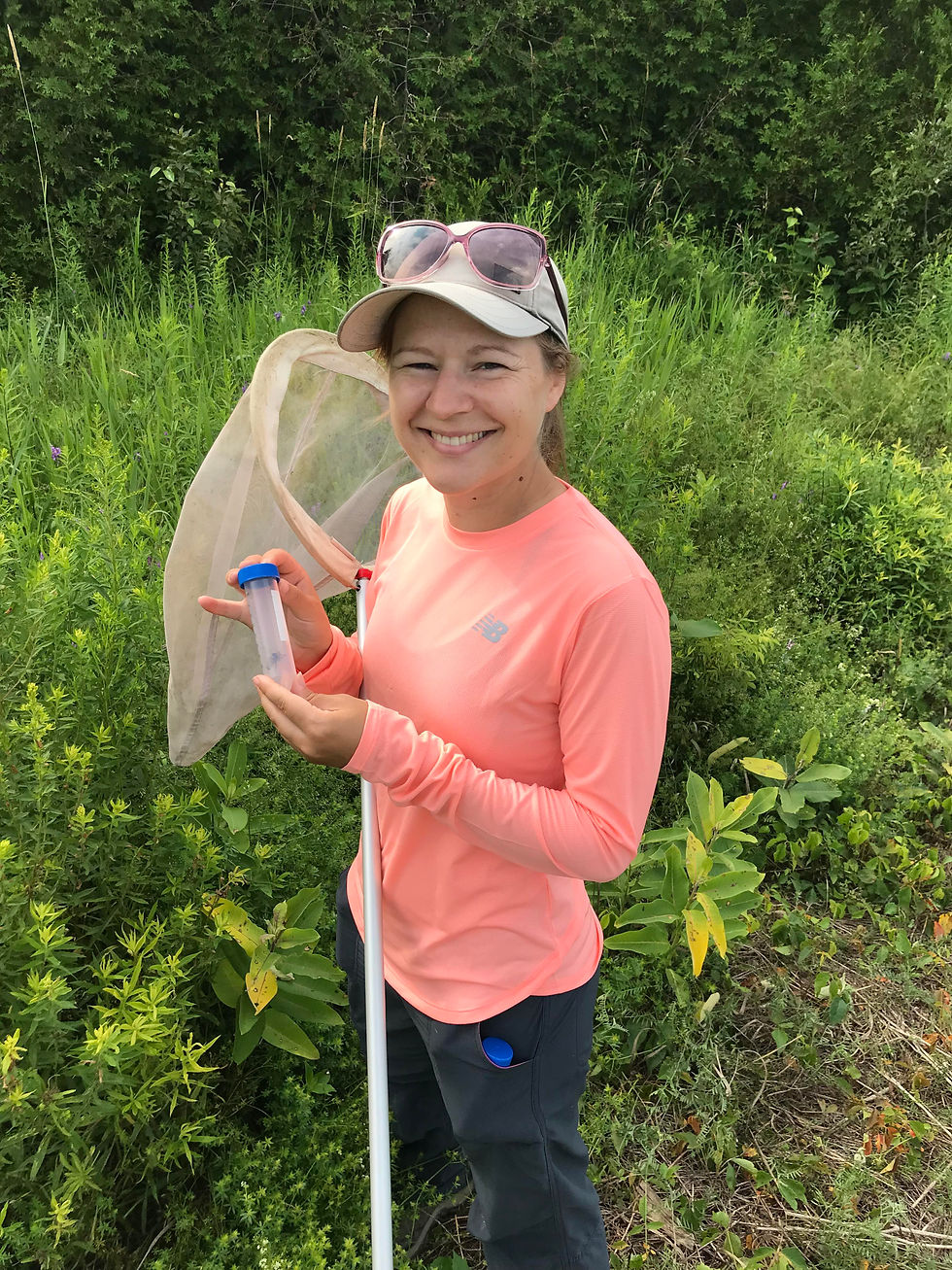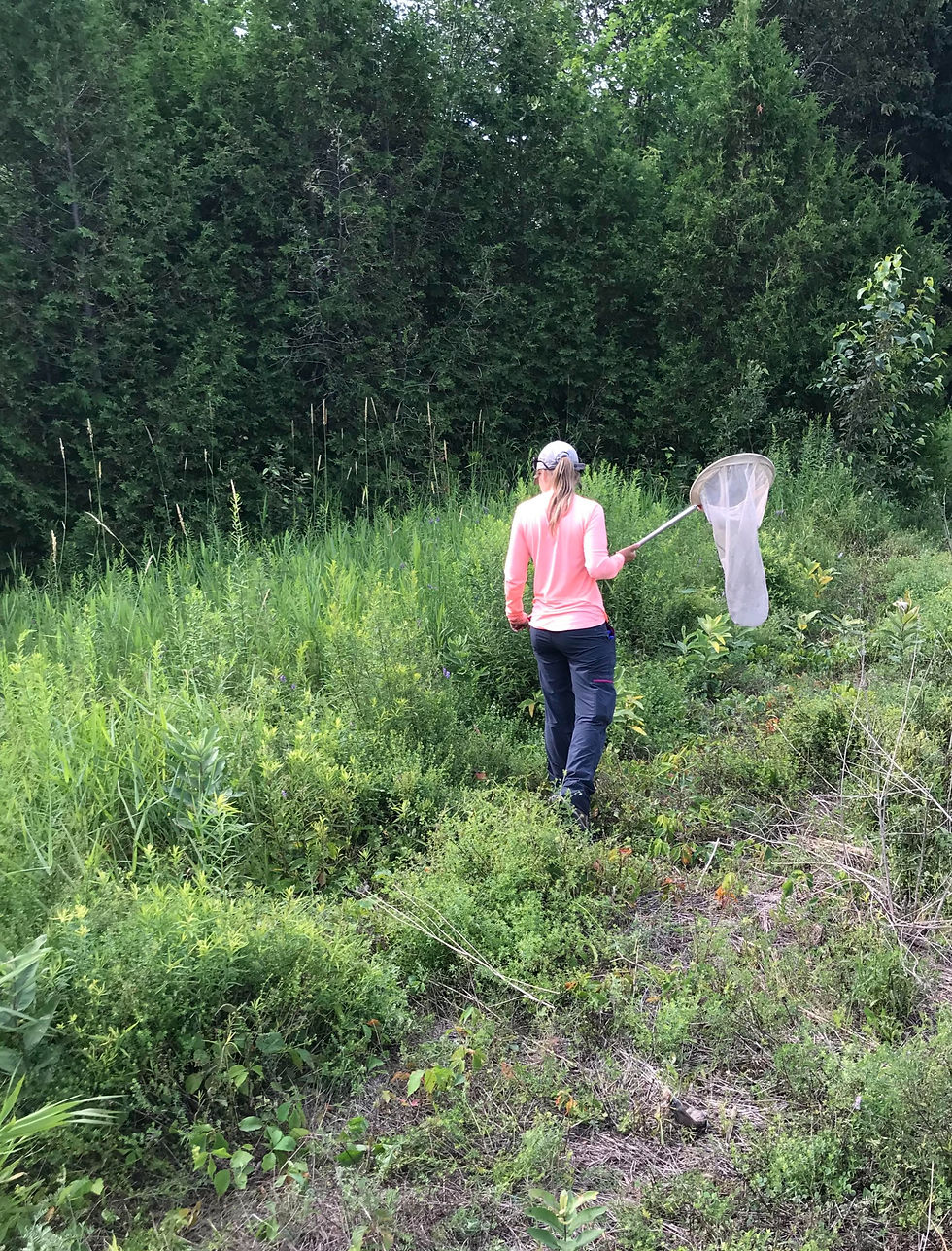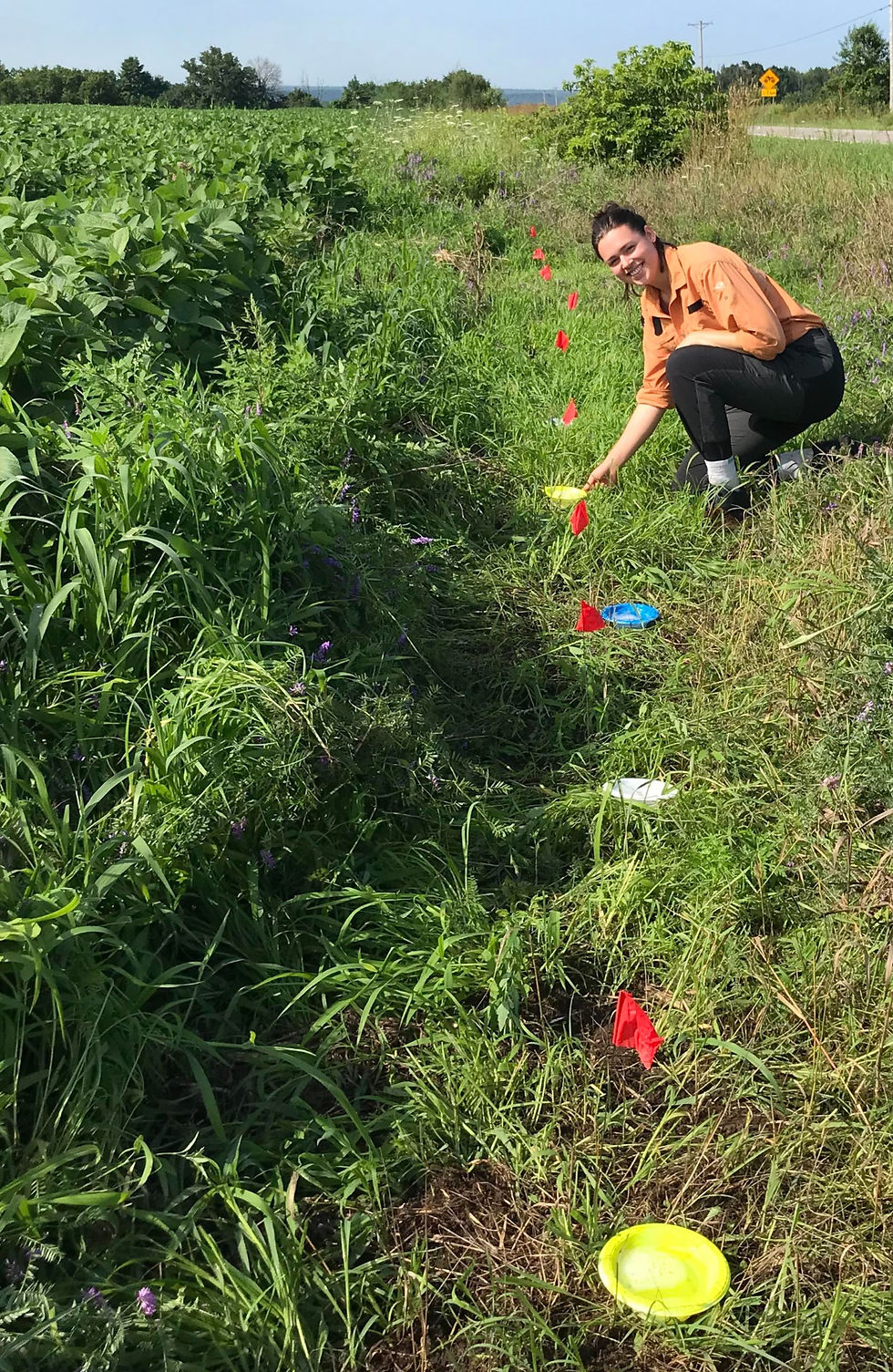BEES Are the BUZZ This SUMMER!
- Muskrat Watershed Council
- Aug 13, 2023
- 3 min read

Most of us have heard about decline in the bee population and may(bee) even bought a box of Cheerios with the package of wildflowers in it to help. Others are out at our local farm fields collecting the research that can really make a difference.
One such person is Dr. Sabrina Rondeau, postdoctoral researcher at the University of Ottawa.
This summer Dr. Rondeau’s time is being spent in soybean fields in Eastern Ontario and Western Quebec collecting the data needed to author a paper titled Nesting in agricultural soils: investigating nest-site preferences and the impact of agricultural practices on local ground-nesting bee communities.

Why the focus on ground-nesting bees?
There are around four hundred species of wild bees in Eastern Canada (Ontario and Quebec), 70% of which nest underground. Because of their nesting behaviour, these bees may be particularly vulnerable to soil disturbances and soil contamination. However, despite being the most important wild pollinators of many crops, and the most diverse group of bees; ground-nesting bees have been studied far less in relation to their susceptibility to habitat degradation and overall nesting ecology compared to other groups of bees due to the difficulty of locating and examining underground nests.
What is the research about?
Wild bees are declining globally, threatening biodiversity, agricultural production, and food security. The causes of these declines include multiple stressors such as climate change, pesticide use, and agricultural intensification.
This research aims to investigate how different groups of bees respond to these environmental stressors, particularly bees that nest underground. The research objectives are:
● To characterize nest-site preferences of ground-nesting bees in and around soybean fields to better understand how to promote their presence on farms.
● To document responses of ground-nesting bee communities to agricultural practices, such as tillage and pesticide use (i.e., are these practices impacting wild bee communities).
● To identify the wild bee visitors of soybean flowers in Ontario and Quebec.

How is This Done?
Sampling occurs once a month (from May to September). During each sampling period, bees are captured using pan traps (coloured bowls filled with soapy water and left in place for 24 hours) and netting. While sampling they will also characterize the presence of flowering plants within field margins as well as soil texture, pH, compaction, and pesticide residues in soil.
In July, they also caught the wild bees that are directly foraging on soybean flowers to identify who the wild bee pollinators of soybeans are within Eastern Canada. They will also look for nests within and outside the soybean fields to characterize nesting habitats and preferences (e.g., soil texture, impact of tillage on nest density).
I asked Sabrina how she started to study in this field. She told me:
“I am from a small town in Lanaudière, QC, called Sainte-Émélie-de-l’Énergie. I was passionate about insects and nature at a very young age. As a kid my favorite activity was to collect bugs (especially bumblebees and butterflies) in jars to observe them. My dad used to make jokes that I was going to ‘work with bugs’ growing up. He wasn’t wrong.”
This began the path to a dual expertise in pollinator ecology and food systems. Beginning with training as a Dietician, then Biologist, then on to a Masters Degree in Plant Biology and a Ph.D. in Environmental Sciences. Still pursuing a career in academia, Sabrina aspires towards a research career to study the interface between wild pollinator conservation and sustainable food production.
What makes you passionate about this?
“The intimate relationship linking pollinators to human food production (and food security) is the main reason I do what I do. My research is driven by my vision of a world where nutritious food can be grown in sufficient quantity to feed the world without harming the environment and its biodiversity.”
So, what is the outcome of this research for you, me, and the average Joe?
Precious, precious knowledge.
That is why our farm and the other farmers agreed to participate.
The world knows that no bees, equal no food.
This gives us information to understand which best management practices will help the bees and our farmers to produce food together successfully.


Comentarios